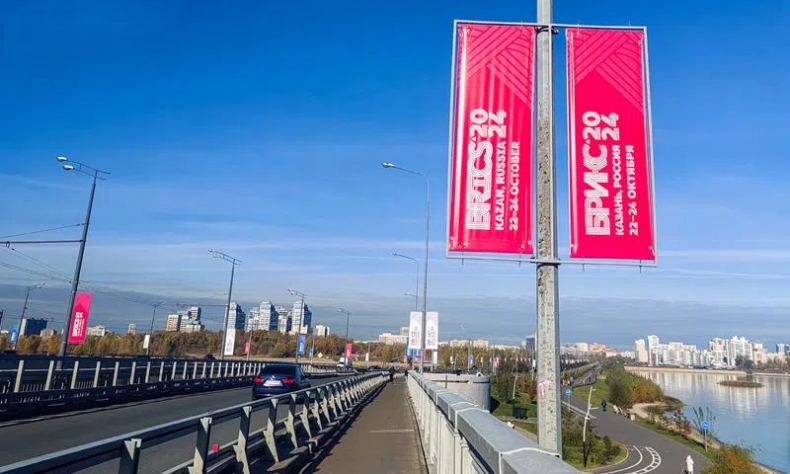The Opportunities and Challenges for Enlarged BRICS

The stronger economic capacity of the BRICS would be good news for the developing economies, because the issues of interest to these economies may be advocated with increased negotiating capacity.
The 16th BRICS Summit on October 22-24 in the Russian city of Kazan is the first such gathering to be held after the BRICS expansion. The enlarged BRICS is a focus of the world as it places great hopes as well as faces many challenges.
In December 2023, the BRICS summit held in Johannesburg, South Africa announced the decision to accept new members into the cooperation mechanism.
The enlargement of the group seems to be the outcome of several elements. One is to intensify the relationship among Global South economies. Also, the specific interest in bringing Saudi Arabia, Iran, United Arab Emirates and Egypt into the group seems to follow a geographic perspective: the Middle East was the only Global South region with no representatives in the BRICS. Furthermore, a larger number of partners might facilitate the creation of a significant trade environment using alternative means of payment, a movement that is parallel to the increasing inconformity with the limited presence of Global South countries in the governance of multilateral institutions.
The enlarged BRICS corresponds to a high share of global production GDP in terms of PPP (35.7 percent, compared to 29.0 of G7 countries) and population (46 percent of the total). It comprises six of the ten biggest oil exporters and the major oil importer (China). It also accounts for 42 percent of the total production of petroleum, 37 percent of the total production of gas and over 40 percent of the total production of renewable energies.
Given the big sovereign funds of Saudi Arabia and the United Arab Emirates, the new Middle Eastern members are expected to contribute significantly to increasing the capital of the New Development Bank (NDB), as well as to enlarge the potential for the Currency Reserve Agreement, apart from showing interest in investing in other BRICS countries.
According to the operational rules of the NDB, the new members become possible areas for the bank to finance projects, a prospect that is likely to be particularly appealing to Iran, Egypt and Ethiopia.
This bigger set of countries raises some eyebrows in several Western governments. The enlargement of the group takes place in a moment when two conflicts provide daily headlines in the media everywhere.
This is not a minor issue. A precondition for assuring homogeneity of a group of countries is to build the assurances of common views about global scenarios. Yet in the case of the present two wars even though some members of the group are directly or indirectly involved in the conflicts there is no clearly identified position by the group, if one considers each country member votes in the United Nations General Assembly.

The stronger economic capacity of the BRICS would be good news for the developing economies, because the issues of interest to these economies may be advocated with increased negotiating capacity. The waiting list of countries that have signaled interest in joining the BRICS is seen as an indication of its global influence or as an increasingly important mechanism to support multilateralism with UN at the center.
The enlargement of the BRICS also implies likely impacts on the operation of the group. The bigger BRICS dilutes the effects of bilateral conflicts between pairs of members, thus increasing the probability of advancing joint decisions on sensitive issues.
The BRICS comprises several major exporters and major importers in global trade. Hence it increases the chances of having trade contracts settled in currencies other than the U.S. dollar.
At the same time, the bigger set of countries also implies challenges to the functioning of the group. If the traditional process of decision-making by consensus is to be maintained, as it should be, a larger group of countries is bound to make it even more challenging than before to reach common positions. This reinforces the need for the group to define more clearly the criteria to be adopted for accepting new members. Adding new members should take place only when their accession corresponds to well-identified objectives of the existing members.
Despite the characteristics and procedures of the new configuration of the group, there are some issues in which clear progress can be obtained. Exchange of technology, mutual facilitation of trade procedures, and exchange of information about successful social policies are only some of the areas where the group can profit from the enlarged set of members.
Another potential area for mutual support is the creation of facilities to stimulate production in value chains. It goes without saying that continuous production processes are not alternatives for production sliced in different countries, hence economies that are rich in natural resources should not aim at reaching the same degree of participation in such chains as others, more focused on manufactured goods. Geographical distance is also another constraint. Yet there is a margin for productive complementarity among BRICS members, as a source of competitiveness. Also, sharing experience with creating such productive chains might be helpful to foster value chains at a regional basis.
In summary, BRICS members are facing a new reality that might take some time to process. It will require a good deal of new rulings to avoid misfunctioning of the group, as well as not to weaken the group’s capacity to influence global governance. At the same time, however, a bigger group might imply more negotiating capacity on important matters.
The author is a Brazilian economist.
The article reflects the author’s opinions, and not necessarily the views of China Focus.
 Facebook
Facebook
 Twitter
Twitter
 Linkedin
Linkedin
 Google +
Google +










